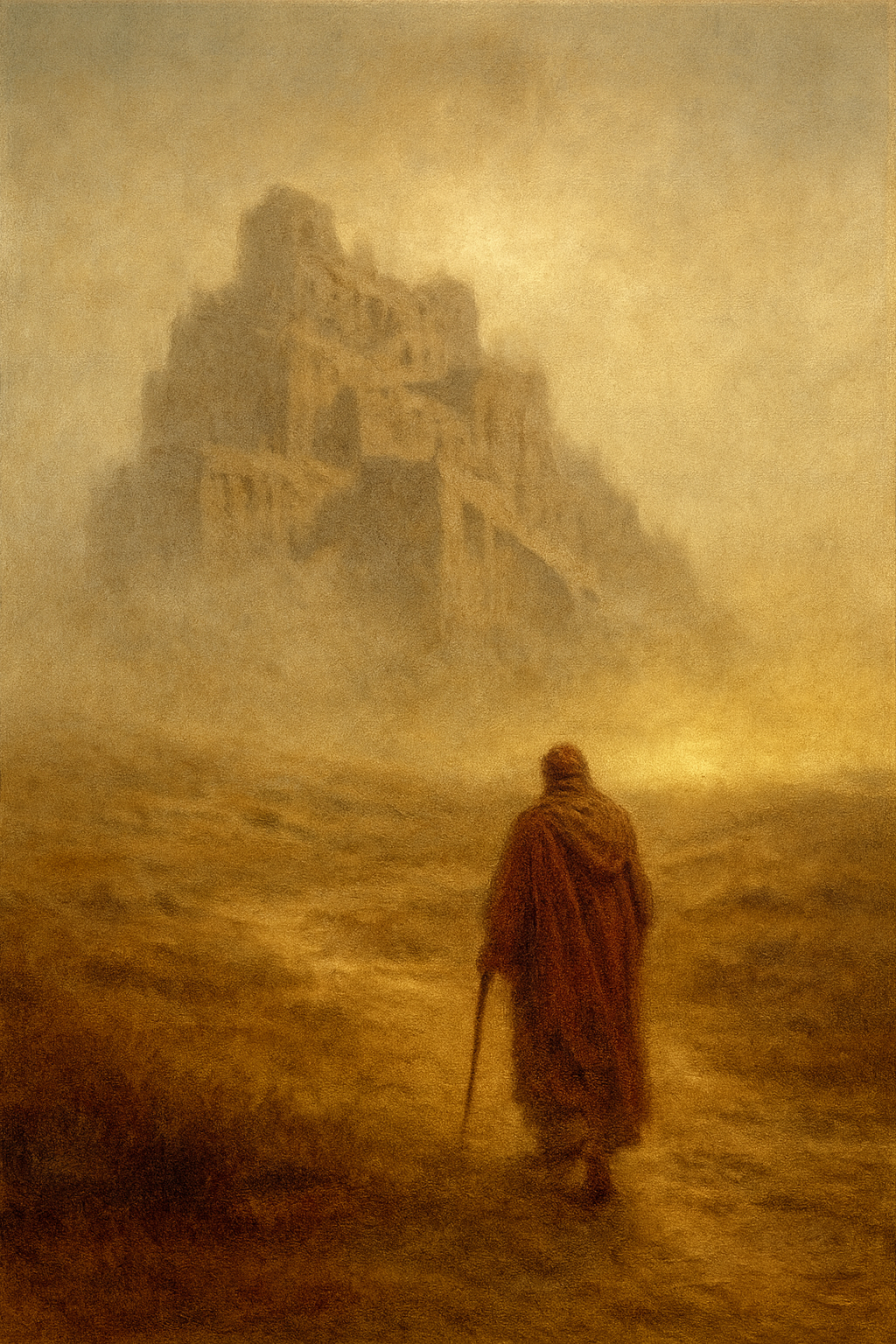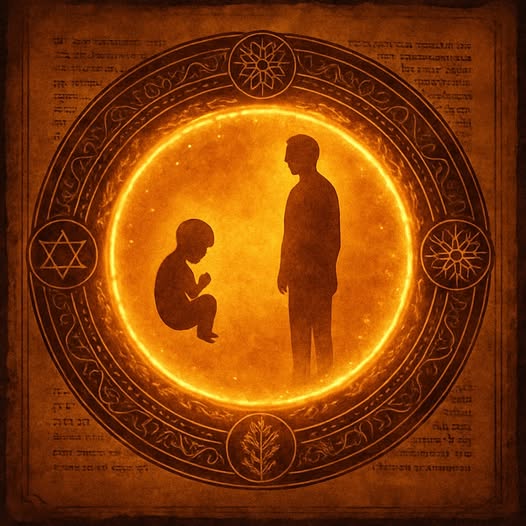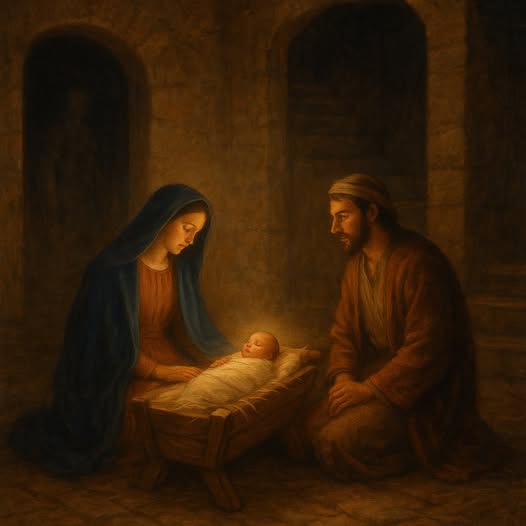
The Tower of Babel is often read as the immediate prelude to the call of Abram in Genesis 12. One chapter ends with scattering and confusion, and the next begins with a divine call to a man named Abram. But what if that shift was not immediate? What if there was a significant gap, possibly even centuries, between Babel and Abram? A close reading of the biblical text suggests that this is not only possible but likely. Exploring this potential stretch of time reshapes how we understand the biblical story of rebellion, dispersion, and God’s redemptive plan.
The Tower of Babel and the Table of Nations
Genesis 10 and 11 are not arranged in strict chronological order. Genesis 10 gives a broad overview of Noah’s descendants and the nations that came from them, often referred to as the Table of Nations. It lists seventy nations and languages, yet the confusion of languages at Babel does not occur until the following chapter. This structure is thematic rather than sequential. Genesis 10 describes what happened, while Genesis 11 explains how it happened. This ancient literary technique allows Genesis 11 to zoom in on a pivotal event, the Babel incident, that underlies the global dispersion already described. That alone suggests a more complex timeline. The formation of nations was not instant. It took time for families to become clans, for clans to become tribes, and for tribes to develop into distinct nations.
Compressed Genealogies in Genesis 11
Genesis 11:10–26 presents a genealogy from Shem to Abram. On the surface, it looks like a simple, direct father-to-son list, complete with specific ages. However, ancient genealogies often compress generations for theological or literary purposes. The Hebrew word translated as “fathered” can also mean “became the ancestor of,” making it unclear whether each name listed is a literal father or merely a distant progenitor. This type of compression is seen clearly in Matthew 1, where names are intentionally skipped to create a structured genealogy of Jesus. The goal is not deception but emphasis. If Genesis 11 uses a similar technique, then the time between Shem and Abram could be far longer than the ages suggest.
Peleg and the Division of the Earth
Genesis 10:25 provides a significant marker when it states, “To Eber were born two sons. The name of the one was Peleg, for in his days the earth was divided.” This division is often interpreted as a reference to the Babel event, where languages were confused and humanity was scattered. If that connection is correct, and if Peleg lived many generations before Abram, then the Babel incident cannot be viewed as the immediate historical backdrop to Abram’s story. Instead, it happened much earlier. Some scholars have suggested that the division in Peleg’s days could also refer to the geographic or political division of territories, perhaps even land apportionment among emerging clans. Regardless of the interpretation, the placement of this statement within the genealogical structure supports the idea that a significant amount of time passed between the Babel dispersion and Abram’s emergence on the scene.
Civilization Takes Time to Develop
By the time we meet Abram in Genesis 12, the world has changed dramatically. He leaves Ur of the Chaldees, a thriving city in ancient Sumer, and interacts with a Pharaoh in Egypt whose kingdom is already organized, centralized, and steeped in tradition. Abram gives a tithe to Melchizedek, a king-priest ruling in Salem, and later confronts a coalition of kings from Elam and Mesopotamia, each ruling over established city-states with trained armies and political alliances. These are not tribal nomads still adjusting to a post-Babel world. They are the rulers of distinct nations that have had time to grow, develop economies, construct monumental buildings, and establish international trade routes.
In the centuries after the scattering at Babel, civilizations began to reflect the consequences of dispersion. Writing systems diversified, languages took shape, and regional powers emerged with separate religious frameworks. Nations like Elam and Egypt flourished. City-states engaged in diplomacy and warfare. The ancient world became increasingly complex. This kind of widespread development would have required a long stretch of time, far more than a single generation. It strongly suggests that the call of Abram took place well after the events at Babel had faded into distant memory.
The Ancient Near Eastern Context
Historically, the city of Ur flourished during the Ur III period, around 2100 to 2000 BCE. It featured ziggurats, centralized bureaucracy, legal codes, and far-reaching trade. This fits well with the biblical description of Abram’s world. If the Tower of Babel marked a moment of global rebellion and dispersion, then the story of Abram marks God’s quiet intervention into a world that had since organized itself along entirely new political, linguistic, and religious lines.
The scattering at Babel did not reset humanity to a primitive state. It spread the knowledge of city-building, religious ritual, and royal ideology across the earth, where it took on different shapes in different cultures. Abram’s journey begins in a world that had become increasingly idolatrous, stratified, and spiritually fractured, but also highly advanced by the standards of the ancient world.
From Stewards to Saboteurs
According to Deuteronomy 32:8–9, when Yahweh divided the nations at Babel, He allotted them to the “sons of God” but reserved Israel as His own portion. This act was not merely punitive. It established a framework of delegated stewardship. The divine beings assigned to the nations were meant to govern well, maintain justice, and reflect the will of the Most High. There is no indication that they rebelled immediately. In fact, Psalm 82 portrays Yahweh bringing formal charges against them long after their appointment, condemning them not for receiving authority, but for abusing it.
This implies a stretch of history during which the gods of the nations were obedient. They oversaw the development of cultures, laws, and rituals that may have retained fragments of truth. But over time, they turned from their role as stewards to pursue their own glory. They received worship, distorted justice, and led their people away from the God who had entrusted them with power.
Their corruption was gradual, and their judgment was deserved.
By the time Abram is called, the world is no longer simply scattered and divided. It is under the sway of rival powers. The gods of the nations have become enemies of the truth. What began as delegated stewardship has become spiritual rebellion. God’s call to Abram is not just the beginning of a covenant. It is the beginning of a confrontation.
What the Creation of Languages Tells Us About the Timeline
If the confusion of languages at Babel was a supernatural act, as Genesis 11 states, then it affected far more than speech. The sudden loss of mutual understanding dismantled human cooperation at its foundation. Cultural, technological, and religious unity was shattered. In place of a single society, there emerged many groups, each cut off from the rest by the barrier of language.
As these new communities migrated and settled across the earth, they carried with them fragments of the original stories—of creation, rebellion, divine beings, the flood, and the mountain of God. But those stories were refracted through new languages, each with its own structures, metaphors, and limitations.
Over time, those memories were reshaped by distance, pride, and the influence of the gods who now ruled over them. What resulted was not a set of mythologies that diverged randomly, but a chorus of distorted echoes that still rhyme with the truth. The Mesopotamian epics, Egyptian cosmogonies, and Canaanite divine wars all preserve broken reflections of earlier realities.
This cultural and theological drift could not happen overnight. It required time. Myths had to solidify. Religious systems had to evolve. Local gods had to be elevated to national deities. In that expanding silence between Babel and Abram, the nations forgot—but not entirely. And when Yahweh finally spoke again, it was not to correct all the myths at once, but to begin something new through one man.
Why This Time Gap Matters
Recognizing a possible gap between Babel and Abram changes how we understand the early biblical narrative. The world was judged and scattered at Babel. Nations began to form, stabilize, and grow. Over time, they turned away from God. Then, into that silence, Yahweh called Abram to begin a new nation. This also aligns with other biblical themes. In Deuteronomy 32:8–9, God divides the nations according to the number of the sons of God but chooses Israel as His own inheritance.
Psalm 82 rebukes these divine beings for their corruption and promises their judgment. In this view, the call of Abram is not random. It is God reclaiming a portion of the world for Himself, starting with one man. That moment only makes full sense if enough time had passed for the world to forget, fracture, and fall under the influence of lesser gods.
Conclusion
The Tower of Babel was a dramatic judgment, but its effects were not immediately reversed. Nations formed, but they did not seek Yahweh. They developed power, wealth, and religion, but not truth. By the time Abram steps onto the stage, the world had not just scattered. It had forgotten. That forgetfulness required a new beginning, one that would begin not with a tower, but with a tent. Not with many nations, but with one man. God did not abandon His plan. He simply waited until the moment was right. And when the time came, He spoke again. Not to the world, but to Abram, and through him, to the world once more.
Discussion Questions
- What does the delay between the judgment at Babel and the call of Abram suggest about God’s approach to judgment and restoration?
- How does the supernatural creation of languages at Babel affect our understanding of how quickly nations could have formed afterward?
- If the gods of the nations started as faithful stewards, what does their gradual rebellion tell us about divine freedom and accountability?
- How do the shared mythological “rhymes” between ancient civilizations support the idea of a real, unified history behind their stories?
- Why do you think God chose to re-engage with humanity through one man, Abram, instead of immediately correcting the nations or confronting their gods directly?
Want to Know More?
- Michael S. Heiser, The Unseen Realm
Explores the Divine Council worldview in depth, especially passages like Deuteronomy 32 and Psalm 82. Essential for understanding the role of the gods of the nations and their rebellion. - John H. Walton, The Lost World of the Torah
Examines how law, covenant, and divine presence were understood in the ancient Near East, setting the stage for why God’s covenant with Abram stood out. - Amar Annus, “On the Origin of Watchers”
A scholarly article that connects the rebellious divine beings in Genesis with Mesopotamian apkallu traditions. Excellent for tracing the mythic memory preserved across civilizations. - Jeffrey Niehaus, Ancient Near Eastern Themes in Biblical Theology
Shows how the biblical narrative interacts with ANE concepts of kingship, rebellion, and divine rule—helpful for understanding what made Abram’s call distinct. - David T. Tsumura, The Earth and the Waters in Genesis 1 and 2
Offers a conservative linguistic and theological analysis of Genesis, reinforcing how the earliest chapters frame later divine interventions.





